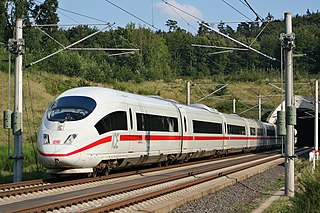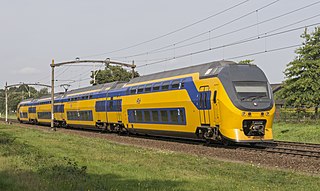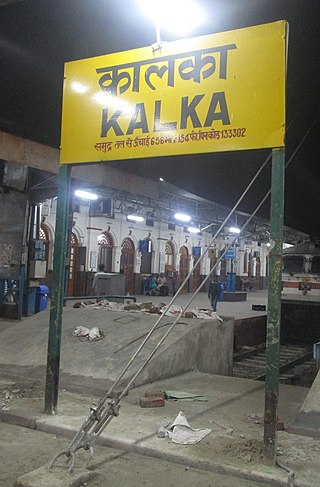
The Intercity Express is a system of high-speed trains predominantly running in Germany. It also serves some destinations in Austria, France, Belgium, Switzerland and the Netherlands, mostly as part of cross border services. It is the highest service category of rail and the flagship train of the German state railway, Deutsche Bahn. There are currently 315 trainsets in use. ICE trains are the highest category trains in the fare system of the Deutsche Bahn. Their fares are not calculated on a fixed per-kilometre table as with other trains, but instead have fixed prices for station-to-station connections, levied on the grounds that the ICE trains have a higher level of comfort. Travelling at speeds up to 320 km/h (200 mph), they are tailored for business travellers or long-distance commuters and are marketed by Deutsche Bahn as an alternative to flights.

The Swiss rail network is noteworthy for its density, its coordination between services, its integration with other modes of transport, timeliness and a thriving domestic and trans-alp freight system. This is made necessary by strong regulations on truck transport, and is enabled by properly coordinated intermodal logistics.

A loading gauge is a diagram or physical structure that defines the maximum height and width dimensions in railway vehicles and their loads. Their purpose is to ensure that rail vehicles can pass safely through tunnels and under bridges, and keep clear of platforms, trackside buildings and structures. Classification systems vary between different countries, and gauges may vary across a network, even if the track gauge is uniform.
The Breitspurbahn was a planned 3,000 mm broad-gauge railway, proposed during the time of Nazi Germany, supposed to run with double-deck coaches between major cities of Grossdeutschland, Hitler's expanded Germany, and neighbouring states.
The Thar Express was an international passenger train that ran between the Bhagat Ki Kothi a suburban area of Jodhpur in the Indian State of Rajasthan and Karachi Cantonment of Karachi in the Pakistani Province of Sindh. The name of the train is derived from the Thar Desert a sub-continental desert, which lies in the north-western part of the Indian subcontinent and ranks 17th in the world covering an area of 200,000 km2 (77,000 sq mi).

In the summer of 1939, weeks ahead of the Nazi German and Soviet invasion of Poland the map of both Europe and Poland looked very different from today. The railway network of interwar Poland had little in common with the postwar reality of dramatically changing borders and political domination of the Soviet-style communism, as well as the pre-independence German, Austrian and Russian networks which the Second Polish Republic had partially inherited in 1918 after the end of World War I. The most important junctions in the Polish territory in summer of 1939 were:

Rail transport in the Netherlands uses a dense railway network which connects nearly all major towns and cities. There are as many train stations as there are municipalities in the Netherlands. The network totals 3,223 route km (2,003 mi) on 6,830 kilometres (4,240 mi) of track; a line may run both ways, or two lines may run on major routes. Three-quarters of the lines have been electrified.

The Polish railways network consists of around 18,510 kilometres (11,500 mi) of track as of 2019, of which 11,998 km (7,455 mi) is electrified. The national electrification system runs at 3 kV DC.

The Transalpin is a EuroCity express train linking Zürich (Switzerland) with Graz (Austria) via Liechtenstein. Introduced in 2013, it is operated by the Austrian Federal Railways (ÖBB) and the Swiss Federal Railways (SBB-CFF-FFS). From 1958 to 2010 a train of the same name linked Basel or Zürich with Vienna.

The word Rheinpfeil was used to name a number of express trains that ran in Germany between the 1950s and 1991. For much of that period, a train carrying the name Rheinpfeil also linked Germany with at least one neighbouring country.

The word Mediolanum has been used to name three distinct international express trains that have run to and from Milano Centrale in Milan, Italy since 1957. The focus of these trains on the city now known as Milan reflects the fact that Mediolanum is the Latin word for ancient Milan.

The Polonia is a EuroCity (EC) express train. It was introduced in 1997, to supplement the existing EuroCity train, the Sobieski, on the international route between Vienna, the capital of Austria, and Warsaw, the capital of Poland, via the Czech Republic.

Katwa is a Kolkata Suburban Railway Junction Station on the Howrah–Bandel–Katwa line, Barharwa–Azimganj–Katwa and the Howrah–New Jalpaiguri line. It is located in Purba Bardhaman district in the Indian state of West Bengal. It serves Katwa and the surrounding areas.

Kalka railway station is the northern terminus of the Delhi–Kalka line and the starting point of the UNESCO World Heritage Site Kalka–Shimla Railway. It is located in the Indian state of Haryana. It serves Kalka and passengers moving on to Shimla.
The Warsaw − Terespol Railway is a 211 kilometres (131 mi) long railway in Poland, opened in 1866 between Warsaw and Terespol, as a part of the railway between Warsaw and Moscow.
Munabao railway station is located in Barmer district in the Indian state of Rajasthan. It is a railway transit point on the India–Pakistan border.
The Marwar Junction–Munabao line connects Marwar Junction, on the Jaipur–Ahmedabad line to Munabao, the last station in India, near the India–Pakistan border. Both are in the Indian state of Rajasthan. There is a link to Jodhpur. This line operates under the jurisdiction of North Western Railway zone.

The RABe 501, nicknamed Giruno, is a high-speed electric multiple unit train built by Stadler Rail of Switzerland for the Swiss Federal Railways (SBB). According to Stadler Rail, it is the world's first single-decker low-floor high-speed train.

Zell (Wiesental) station is the only station in Zell im Wiesental in the German state of Baden-Württemberg and the terminus of the Wiese Valley Railway (Wiesentalbahn), which runs from Basel Badischer Bahnhof. Since the summer of 2003, Zell station has been served only by the Basel Regional S-Bahn.

The Chennai Egmore–Karaikal Kamban Express is an Express train belonging to Southern Railway zone that runs between Chennai Egmore and Karaikal in India. It is currently being operated with 16175/16176 train numbers on a daily basis.















